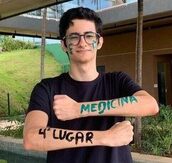FMP 2016
Medical Technology
Medical technologies benefit the lives of people
in many ways. Through the use of such technologies,
people can live healthier, more productive and
independent lives. Many individuals who previously
may have been chronically ill, disabled, or suffering
chronic pain can now look forward to leading normal
or close-to-normal lives.
In the treatment of cardiovascular disease,
the use of coronary stents – artificial tubes used in
cases of coronary heart disease to keep the arteries
open – has halved the number of those dying from
heart attacks or suffering heart failure. Patients with
an Implantable Cardioverter Defibrillator (ICD) – a
small device implanted for those at risk of sudden
cardiac death – now have a 98% chance of surviving
a cardiac arrest, compared with only 5% without the
implantable device.
For those who suffer from diabetes – a disease
which is becoming increasingly common, and which
places a substantial burden on health systems – now
have access to very accurate blood glucose monitoring
technologies. This means that patients can monitor
on a daily basis and control their condition much more
effectively, sharply reducing the risk of suffering the
common but debilitating complications of diabetes,
such as blindness and peripheral nerve damage.
Those undergoing surgical procedures also
benefit from the ongoing advances in medical
technology. The minimally-invasive surgical
techniques which are now used to treat aneurysms
can mean a recovery time of around four weeks,
compared with over a year for older procedures. Using
new medical technologies, endometrial ablation, as
an alternative to hysterectomy, has a recovery time
of just two to four days; the alternative needed six to
eight weeks.
What other benefits does medical technology deliver to society?
Innovative medical technology is an increasingly
important driver for delivering efficiencies in healthcare
systems. Despite consuming a low and relatively
constant 5-10% of national health expenditure,
between 2000 and 2008, medical technology has
reduced hospital stays by an average of around 13%.
This shift from in-patient to out-patient care provides
substantial cost savings, as well as improving quality
of life. Given the combination of Europe’s ageing
demographic and the current economic climate,
the value of these increased efficiencies cannot be
overstated.
Cataract surgery, for example, which used
to require a three to five day hospital stay, is now
almost universally undertaken in day-care centres.
Total knee replacements provide a cost-effectiveness
ratio of around €14,000 per quality-adjusted life year
(measure assessing the value for money of a medical
intervention), by rehabilitating those people who
would previously have required considerable home
life support.
Just as important is the role that medical
technology plays in allowing people to remain valuable
and contributing members of society. Conditions such
as cataracts or severe arthritis would previously
have delayed or prevented people from returning
to work or even to normal day-to-day life. However,
the advances made by the industry in treating these
conditions have helped overcome these challenges,
reducing or removing the hurdles to rehabilitation.
This significantly improves quality of life and selfesteem
for many individuals. Equally important is
medical technology’s role in keeping Europe’s ageing
workforce active, assisting the European Union to
remain competitive in the global economy.
What are the wider economic benefits of medical technology?
The medical technology industry is a sizeable
contributor to the European economy. It provides
large numbers of high-quality jobs, attracts substantial
inward investment and has created a hub for
innovation.
The European market size is estimated at roughly
€100 billion – around 30% of the world market. The
sector directly employs around 575,000 people in
Europe, many of those in highly skilled, high-value
innovative jobs. Furthermore, some 95% of medical
technology companies are Small and Medium
sized Enterprises (SMEs) sector, most of which are
dedicated to investing in research and development.
On average the medical technology industry reinvests
around 8% of sales into product research and
development.
This continuous cycle of investment has made
Europe a hub of excellence for innovation in medical
technology. The industry is growing at more than 4%
per annum, and is attracting increasing amounts of
inward investment, outstripping the United States as
a target for venture capital.
Available at: <http://www.eucomed.org/medical-technology/ value-benefi ts>. Retrieved on: July 30th, 2015. Adapted.
In the fragment of the text “Despite consuming a low and relatively constant 5-10% of national health expenditure, between 2000 and 2008, medical technology has reduced hospital stays by an average of around 13%” (lines 41-44), the connector despite introduces an idea of
concession
time sequence
cause
addition
condition
E mais: nota TRI a todo o momento.





